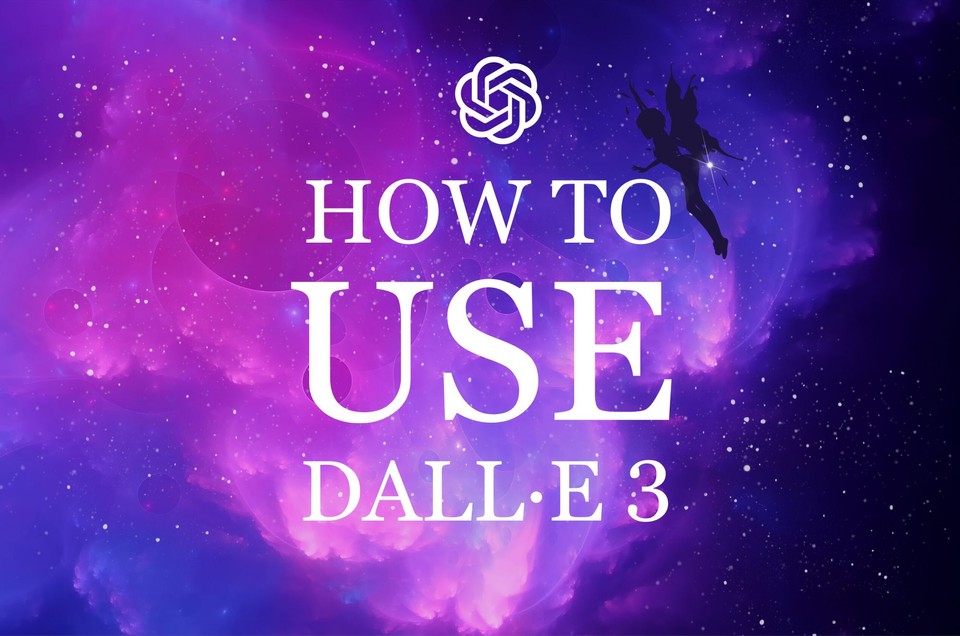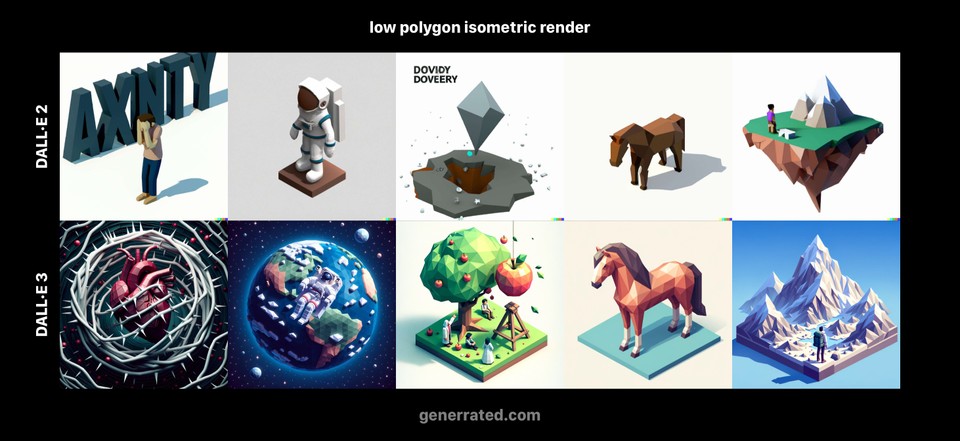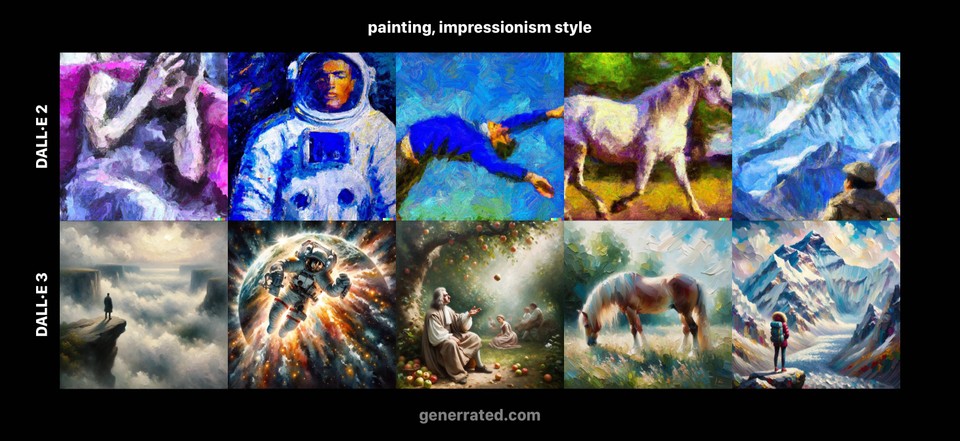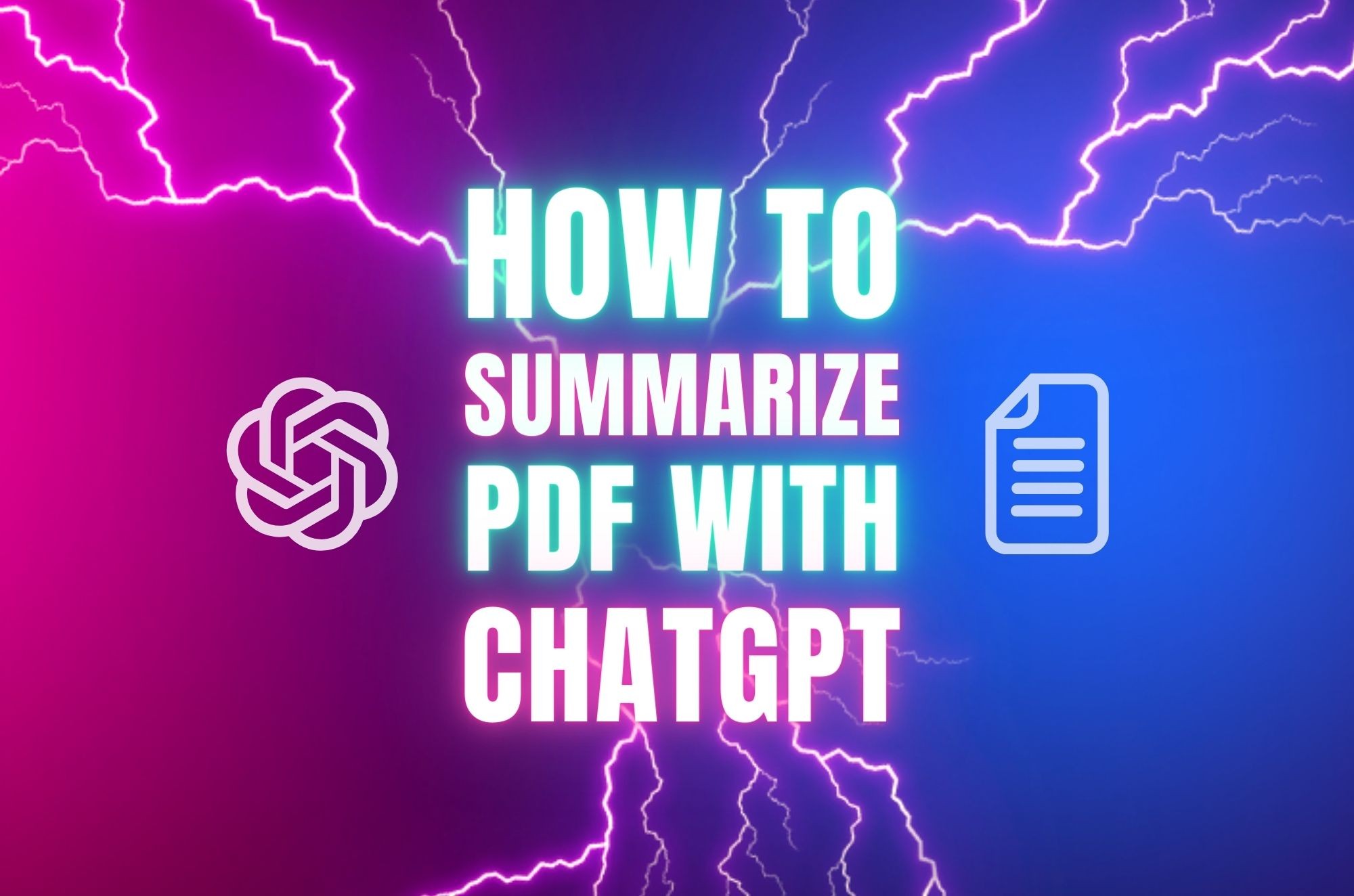Introduction
More than 3,000,000 active developers are harnessing the power of the DALL·E advanced train algorithm model. It is redefining how we perceive and interact with AI-generated visual content.
This article will dive into the latest evolution of this groundbreaking technology: DALL·E 3. We'll explore its enhanced capabilities, compare DALL·E 3 with DALL·E 2, and the responsible AI practices at the forefront of its development.
Join us on a journey through the AI landscape as we unravel the possibilities offered by DALL·E 3 and learn how to wield this innovative tool for your creative endeavors.

What is DALL·E 3?
DALL·E 3 is an image generation model that inputs a text prompt and generates a new image as an output. DALL·E 3 significantly advances AI-powered image generation over its predecessor DALL·E 2, by improving caption fidelity and image quality. Let’s learn how to use DALL·E 3 to create AI images via ChatGPT Plus.
How to Use DALL·E 3 to Create AI Images with ChatGPT
As of early October 2023, DALL·E 3 is accessible to ChatGPT Plus and Enterprise customers. It means that a vast user base can now explore and utilize the capabilities of DALL·E 3 for their creative projects. Here's a step-by-step guide on how to make the most of this powerful tool:
1. Sign Up for ChatGPT Plus
To access DALL·E 3, you must be a ChatGPT Plus subscriber. Here's how to get started:
-
Sign up for a ChatGPT account.
-
Click "Upgrade to Plus" at the bottom of the left sidebar.
-
Select the ChatGPT Plus subscription plan for $20/month and enter your payment details.
Once you've subscribed, you're good to go. It's worth noting that, similar to GPT-4, DALL·E 3 allows you to send 50 requests every three hours. It means you can create images and explore your creative vision.

2. Access DALL·E 3 in ChatGPT
After subscribing to ChatGPT Plus, you can access DALL·E 3 via ChatGPT. Follow these steps:
-
Head to ChatGPT and hover over "GPT-4" at the top of the screen.
-
From the dropdown menu, select "DALL·E 3 Beta."
You're ready to create AI-generated images using DALL·E 3.
3. Generating Images
Using DALL·E 3 is remarkably straightforward. It's similar to using ChatGPT but with a focus on generating images. Here's how it works:
-
Enter a text prompt or interact with it using natural language.
-
Each prompt will result in the generation of four different images for you to choose from.
4. Directing DALL·E 3 with ChatGPT
One of the unique aspects of using DALL·E 3 is the ability to follow up with natural language requests through ChatGPT. If you want changes or specific emphasis in the generated results, you can request it. Here are some things to try:
-
Ask for more variations of a particular image.
-
Modify the placement of the subject in each image.
-
Customize background details.
-
Change the perspective or POV of each image.
-
Request changes such as hanging the generated works on gallery walls.
Please note that DALL·E 3 creates a new prompt based on your requests and generates new images.
Let's explore what sets this iteration apart from its predecessor DALL·E 2, and its enhanced capabilities and functionalities.
DALL·E 3 vs. DALL·E 2: A Giant Leap in Image Generation
In the ever-evolving landscape of AI image generation, each new iteration of a model sets the stage for more incredible artistic innovation and creative exploration. DALL·E 3, the latest offering from OpenAI, stands as a testament to this ongoing evolution, surpassing the capabilities of its predecessor, DALL·E 2, in several significant ways.
Let's delve into the key differentiators that make DALL·E 3 a game-changer in AI-driven image generation and its remarkable proficiency in text embeds.
Image Quality
DALL·E 3 raises the bar for image quality to an astounding level, especially regarding illustrations. Users have been astounded by the exceptional detail, clarity, and realism in the generated visuals. Compared to DALL·E 2, the images produced by DALL·E 3 are breathtaking, effectively rendering its predecessor's outputs as, in a playful metaphor, "potatoes."

Text Embeds and Image Fusion
One of the most significant advancements of DALL·E 3 is its extraordinary proficiency in embedding text within images. This feature allows users to blend textual content seamlessly with visuals, enabling a more prosperous and integrated narrative. DALL·E 3 far surpasses its predecessor, DALL·E 2, in creating contextually relevant and visually appealing text embeds. This enhanced capability opens new frontiers for creating images that tell compelling stories, making it a go-to choice for image-driven text content.
Artistic Adaptability
While both models excel in producing art-inspired images, DALL·E 3 outshines DALL·E 2 regarding adaptability. The latest version demonstrates an impressive ability to replicate various artistic styles. Even though it may not directly mimic specific artists, DALL·E 3 can generate images that capture the essence of those styles. DALL·E 2 pales in comparison, marking a significant advancement in the diversity of creative possibilities.
Precision in Prompts
DALL·E 3 demonstrates a higher sensitivity to prompt nuances, requiring less user intervention to achieve the desired output. In contrast, DALL·E 2 often necessitated more precise prompts and guidance to meet user expectations. This streamlined creative process in DALL·E 3 underscores its capacity to comprehend and execute prompts with remarkable accuracy.

Overcoming Repetition
DALL·E 3 addresses a common issue faced by its predecessor – the risk of producing repetitive content. Users who have engaged DALL·E 3 for generating images of specific concepts have observed that the model offers more varied and creative results than DALL·E 2. This newfound ability to break free from monotonous output ensures that users can explore diverse visual interpretations of their prompts.
Diverse Aesthetics
The aesthetic range of images generated by DALL·E 3 is far broader and more versatile than its predecessor. Users can quickly obtain high-contrast and saturated images and explore nuanced and stylized compositions. DALL·E 2 tended to lean more towards particular aesthetics, whereas DALL·E 3 exhibits greater adaptability, offering users a broader palette of visual styles.

In sum, DALL·E 3 represents a significant leap forward in AI image generation compared to DALL·E 2. Its superior image quality, enhanced artistic adaptability, reduced repetition, improved prompt sensitivity, broader aesthetic range, and remarkable proficiency in text embeds position it as a revolutionary tool for creative expression. With DALL·E 3, the realm of possibilities in AI-driven image generation expands, inviting creators to explore and redefine the boundaries of visual storytelling with unparalleled finesse and sophistication.
DALL·E 3 and Responsible AI
While we've explored the incredible capabilities and creative potential of DALL·E 3, it's essential to emphasize the responsible AI practices underpinning its development and deployment. OpenAI has taken several proactive steps to ensure that DALL·E 3 is a force for good in the AI landscape.
A Focus on Safety
DALL·E 3, like its predecessors, prioritizes safety in AI-generated content. It limits its ability to generate violent, adult, or hateful content, underscoring a commitment to user well-being.
Preventing Harmful Generations
OpenAI has implemented mitigations to decline requests that ask for a public figure by name, reducing potential misuse or unethical practices. This focus on mitigating risks is critical in ensuring the responsible use of AI-generated images.
Internal Testing and Provenance Classifier
OpenAI is actively researching and experimenting with a provenance classifier, an internal tool designed to determine whether an image was generated by DALL·E 3. The early results are promising, with accuracy levels exceeding 99% in identifying unaltered photos. This tool has the potential to enhance transparency and accountability in AI-generated content.
Creative Control
OpenAI has designed DALL·E 3 to decline requests for images in the style of living artists, promoting originality and respecting intellectual property rights. Additionally, creators can opt their images out from training future image generation models, providing control over the use of their creations.
These measures collectively contribute to the responsible development and deployment of DALL·E 3. OpenAI is dedicated to ensuring this powerful tool is harnessed for constructive and ethical purposes, safeguarding against misuse and harmful content generation.
Conclusion
DALL·E 3, the latest gem in AI, is more than just an image model—it's an invitation to unleash your creativity. DALL·E 3 has opened up possibilities with its exceptional capabilities and responsible AI practices.
It's a tool that empowers artists to bring their imagination to life, designers to streamline their workflow, and individuals to explore new horizons in creativity.
As we conclude this exploration, it's essential to remember that a commitment to responsible AI underpins DALL·E 3. Safety, accountability, and creative control are at the forefront of its development, ensuring that it's a force for good.
So, whether you're an artist seeking inspiration, a designer looking to enhance your projects, or an individual with a creative vision, DALL·E 3 awaits your exploration. The canvas is blank, and the possibilities are endless. With DALL·E 3, your ideas are the only limit.



